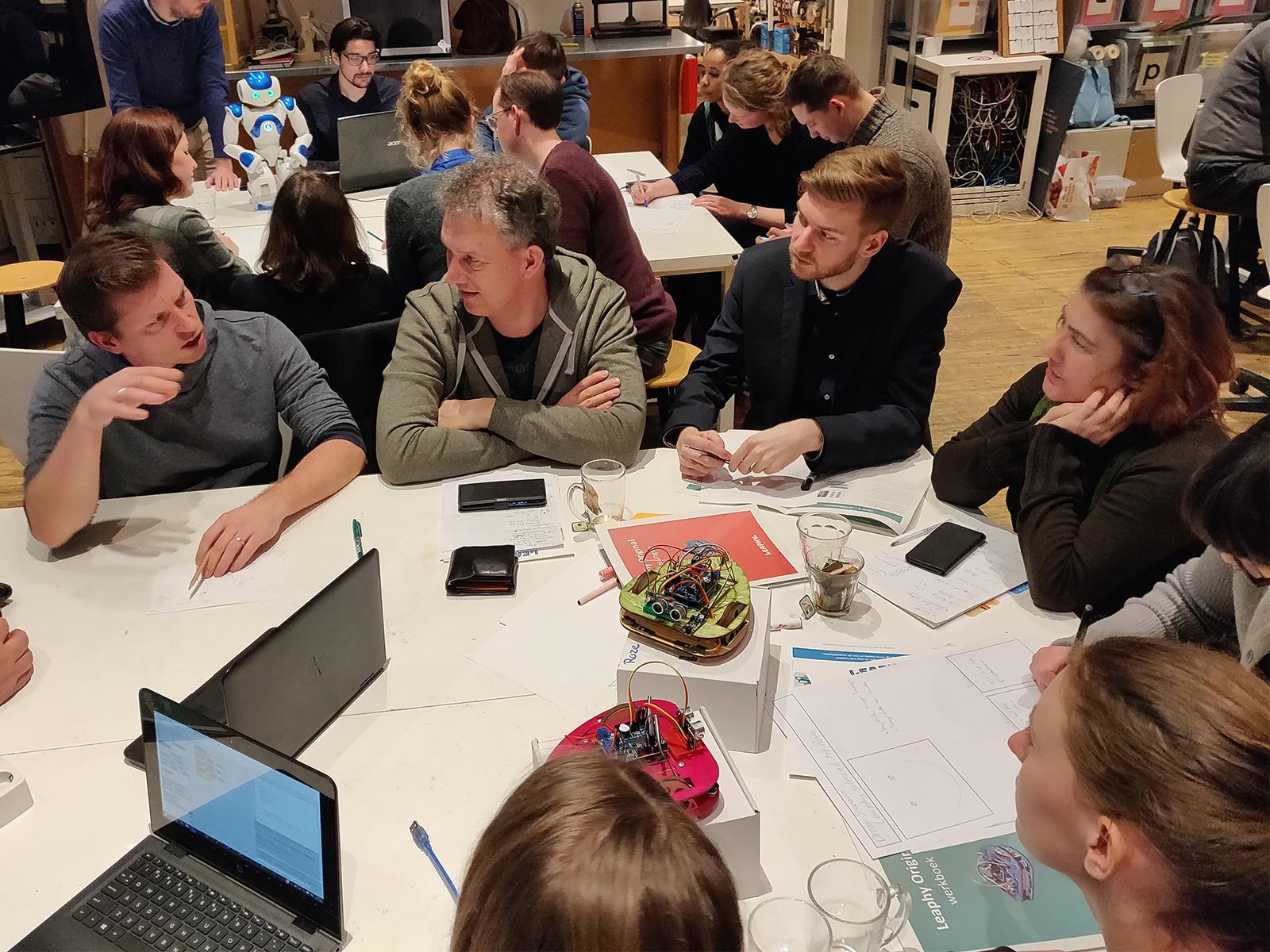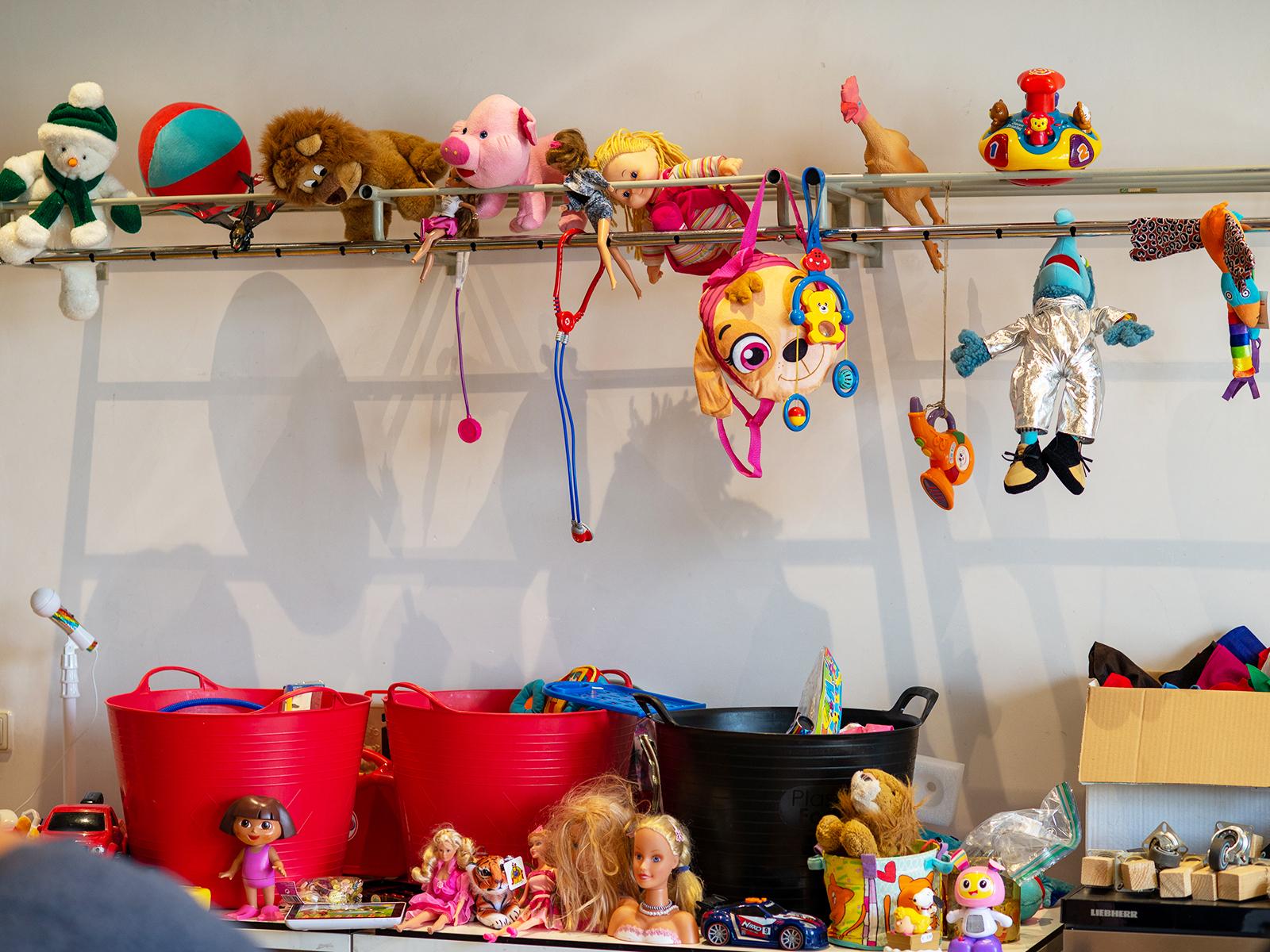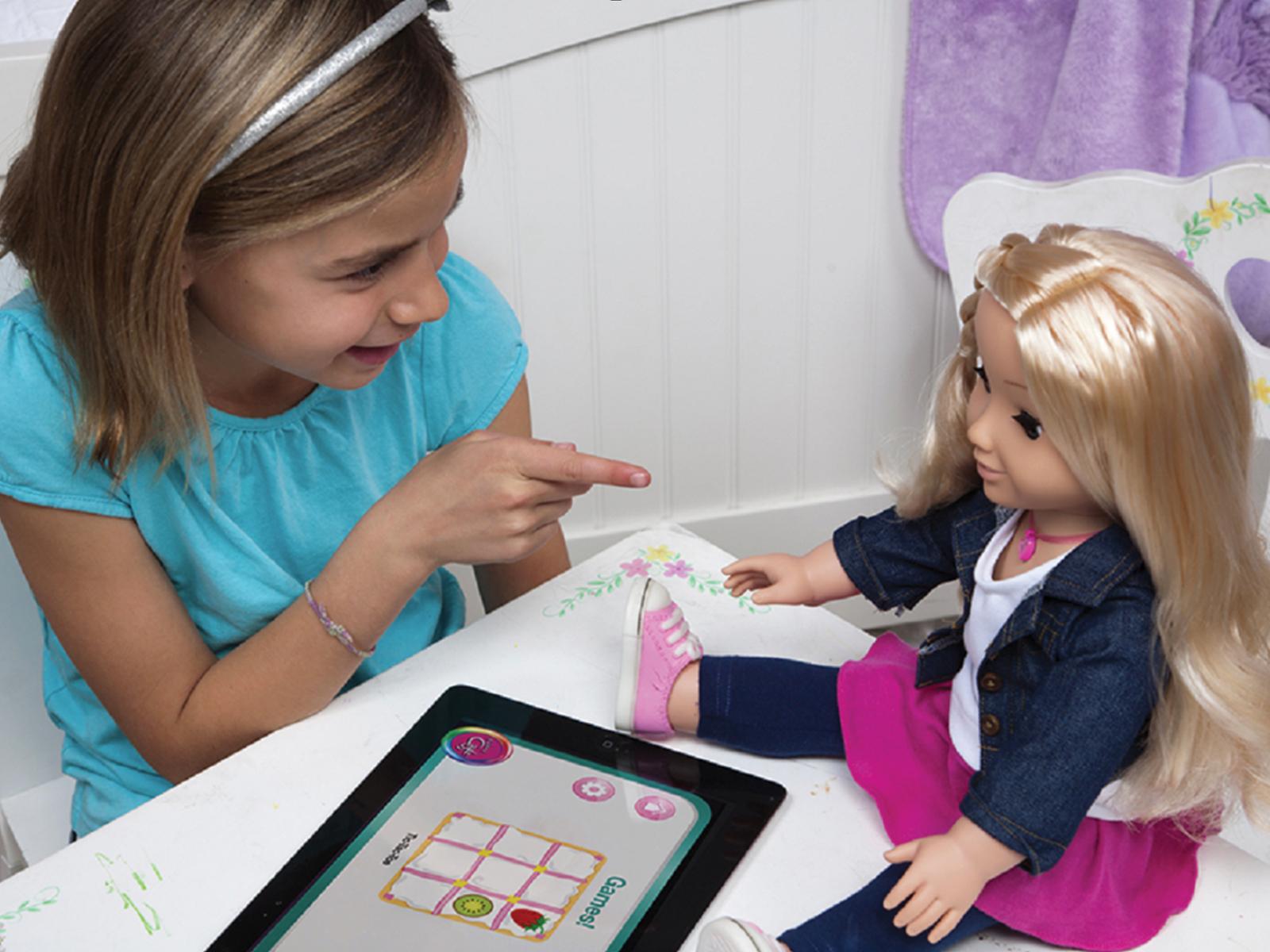Robots have been developed for a wide variety of educational goals. But the question what role these robots are going to play in our educational system remains. We organised an evening around this question. Three different robots were presented and together with the public we discussed possible utopic, dystopic and realistic future scenarios.
During the open evening, Cristina Zaga (UT) and Matthijs Smakman (VU, HU) were invited to share their vision and experiences related to robots in education. Cristina opened the evening with an introduction into robots (or rather, robothings) and the effects of working with robothings and children. Her research explores (among other things), how children design the social cooperative behaviour of robots. From her research she developed the PushOne robot, which she brought along during the evening.
Two secondary educational students were present during the evening to present the Leaphy robot. The Leaphy robot is a robot that was designed by secondary school students during the course nature, life and technology (NLT). This robot is used to teach primary school students how to build and program a robot, which is taught to them by secondary school students.
Matthijs Smakman brought the third robot along, the NAO robot. This robot is used by Matthijs in his research to the ethical and moral challenges of robots in education. In about 80% of the situations where a robot is used in a classroom, the NAO robot is used.
These three robots were the base of the exploration of the evening. The attendees were asked to pick one of these robots and in these groups, they explored what possible worst, best and realistic futures of that robot would be. This resulted in a lively discussion where hilarious, devastating and intriguing scenarios where devised.

Future scenarios
These scenarios were presented to each other by drawing newspaper articles of the scenarios. The Leaphy was feared to become the pied piper of robots, leading children away, the PushOne was expected to establish world peace in 50 years, and the NAO would be able to distinguish tedious tasks from important ones in a realistic future, only helping where necessary and preferable.
The research of Matthijs, which he presented at the end of the evening, reflected a lot of the themes that came up during the different scenarios. Themes like efficiency and freedom of bias can be both positively and negatively influenced by the further integration of robots in education, whilst themes like human contact, privacy and attachment are negatively influenced.
During the evening, a lively debate was initiated that lived on until after the end of the event.


